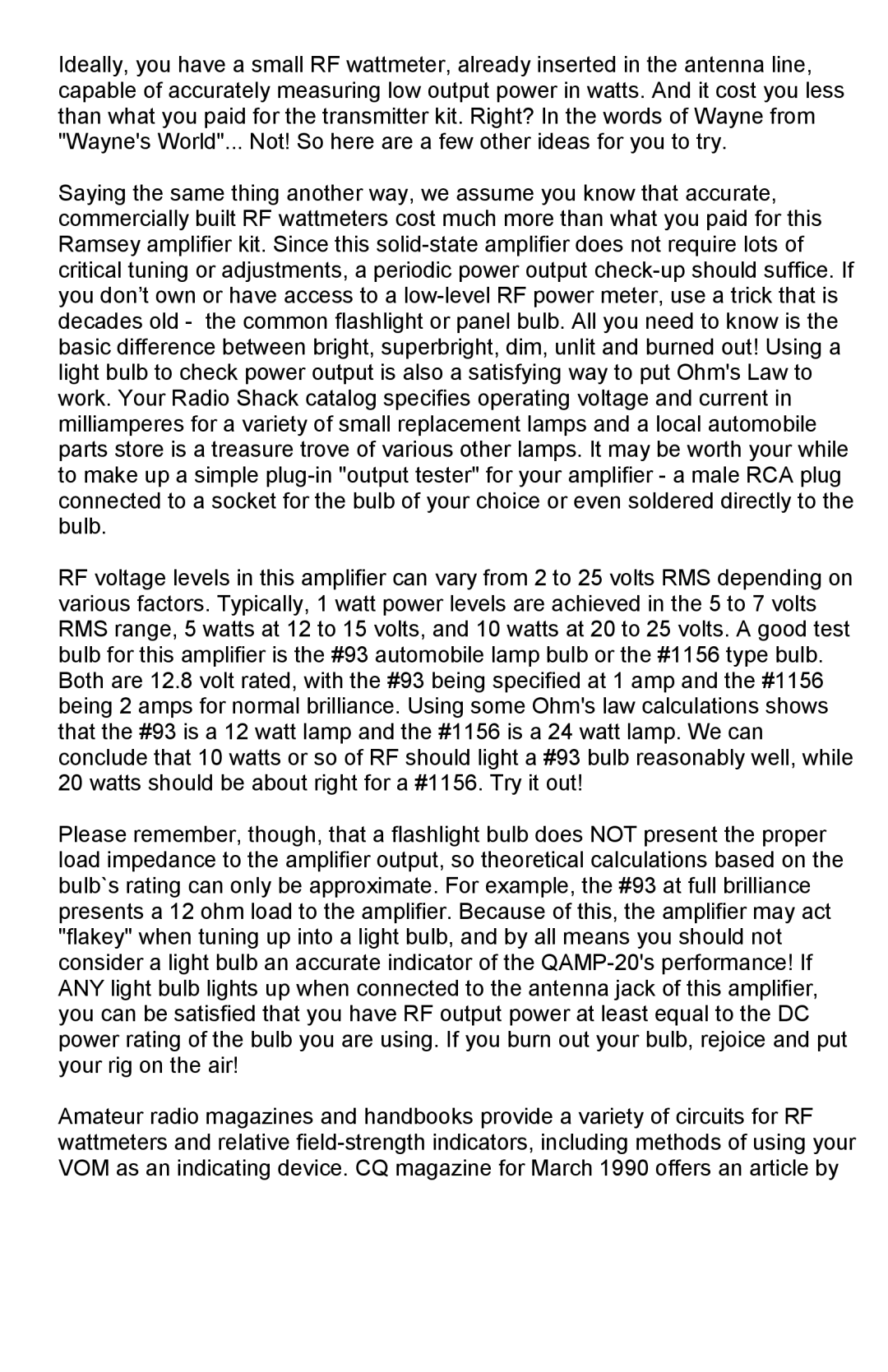QAMP20 specifications
The Ramsey Electronics QAMP20 is a versatile high-fidelity audio amplifier designed to meet the needs of audio enthusiasts and professionals alike. This compact amplifier is characterized by its exceptional sound quality, robust construction, and user-friendly features, making it suitable for a wide range of applications, from home theater systems to professional audio setups.One of the standout features of the QAMP20 is its power output. With a maximum output of 20 watts per channel, the amplifier delivers clear and powerful sound, capable of driving a variety of speaker types with ease. The QAMP20 is particularly well-suited for small to medium-sized speakers, providing ample power to enhance the listening experience without distortion, even at higher volumes.
The QAMP20 employs advanced technology to ensure the best possible audio performance. It features a class AB amplifier design, known for its excellent linearity and low distortion. This technology strikes a balance between performance and efficiency, ensuring that users receive high-quality sound while minimizing power consumption. Furthermore, the unit utilizes high-grade components, including capacitors and transistors, which contribute to its overall durability and reliability.
In addition to its impressive audio performance, the QAMP20 boasts a user-friendly interface, making it easy to integrate into any audio setup. It includes multiple input options, allowing users to connect various audio sources, including CD players, computers, and digital music players. The rear panel features standard RCA inputs, while the front includes a 3.5 mm auxiliary jack, providing flexibility and convenience.
Another noteworthy aspect of the QAMP20 is its compact design. The amplifier is lightweight and small enough to fit seamlessly into most setups without taking up much space. This portability makes it an excellent choice for both home and on-the-go applications, allowing users to enjoy high-quality audio wherever they are.
In conclusion, the Ramsey Electronics QAMP20 stands out in the crowded market of audio amplifiers due to its combination of power, advanced technology, and user-centric design. With its ability to deliver exceptional sound quality and its flexible connectivity options, it represents an excellent investment for anyone looking to enhance their audio experience, whether at home or in a professional setting.
